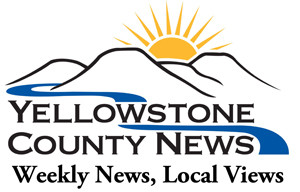Originally published in print edition of Yellowstone County News -by Evelyn Pyburn
SHEPHERD — A plan being developed for ambulance service in the county could mean that 70 percent of the rural population of Yellowstone County would be within 10 minutes of an ambulance.
To develop some kind of service for the county is being viewed by most emergency service providers in the county as critical because the services provided in the past are rapidly deteriorating.
A plan proposed by county officials and area fire districts, would be funded, in large part, by a designated property tax levy that would have to be put before voters for approval.
The soonest that a countywide ambulance service could be operational is sometime in 2019, according to Brad Shoemaker, director of emergency services for Yellowstone County. Shoemaker is working on a plan to establish the service as cost effectively as possible, and as soon as possible. He laid out the details of a plan for County Commissioners during discussion on Tuesday and for members of the Rural Fire Council, later that evening at the Shepherd Fire Station.
If the mill levy request should fail, County Commissioner John Ostlund said, the time is going to come – probably about mid-2019 – that someone is going to call for an ambulance and they will be told “that service is not provided in your area.” In fact, he added, “we are almost at that point now.”
For the rural county areas, “it is a fairly non-existent service,” said Ostlund, “but a lot of people believe we have a contract with AMR.”
There have already been incidents in which responses to ambulance calls have taken over an hour, while dispatch operators have searched in vain for an available provider. A rapidly escalating demand for ambulance service is overwhelming all of the ambulance services in the county.
Because of an increase in demand, AMR, an ambulance service business in Billings, is no longer able to respond to calls outside of the city as they have in the past. Services provided by volunteers of rural area fire districts are feeling the same increase in demand, while experiencing a dramatic reduction in volunteers.
“It is our obligation,” said Ostlund, “to inform the public about the situation, because they think we already have some kind of county service.”
The voters, he said, must READ FULL STORY IN ONLINE SUBSCRIPTION HERE

